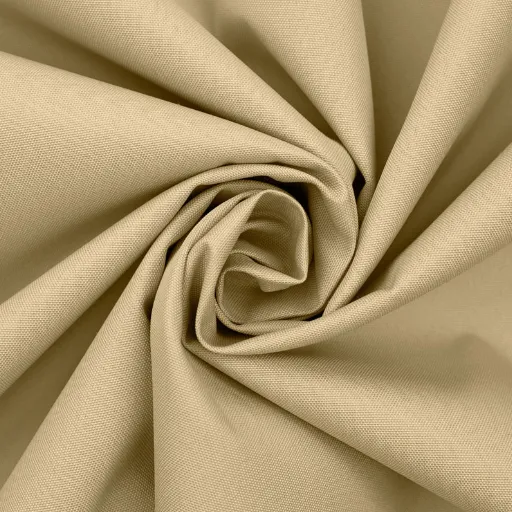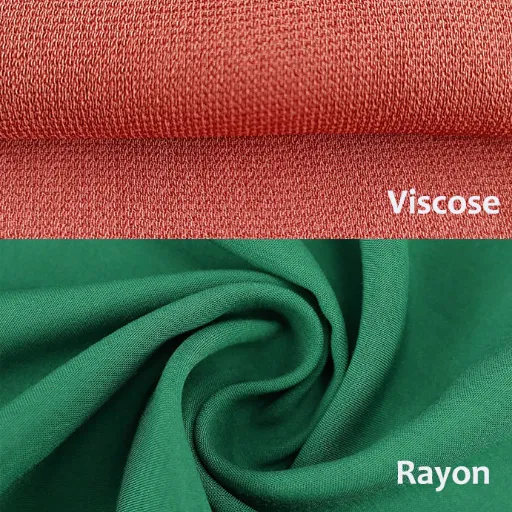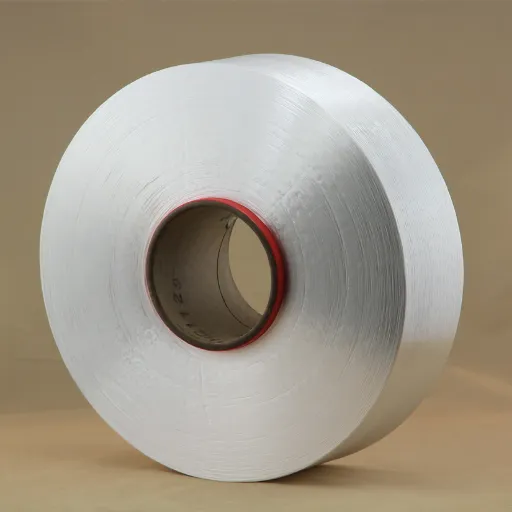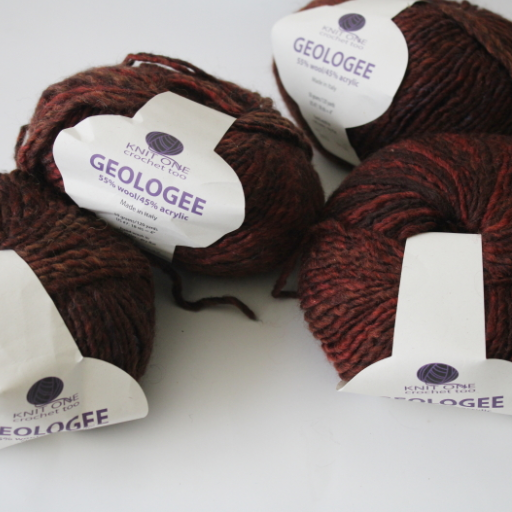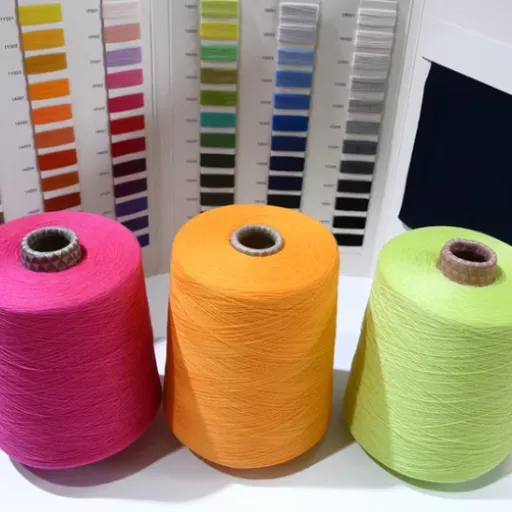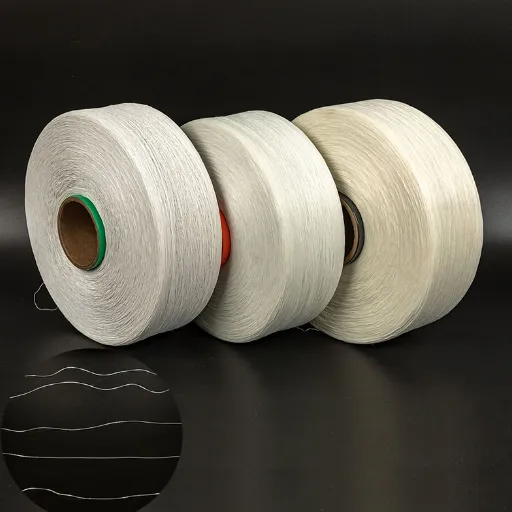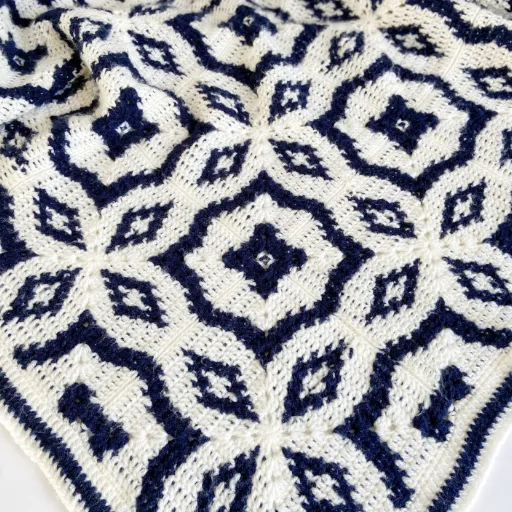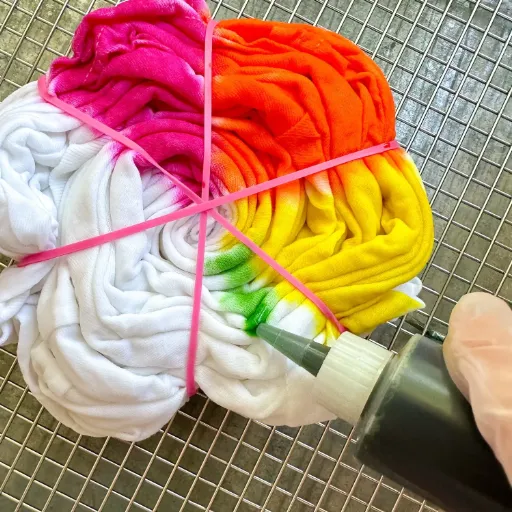When it comes to synthetic fibers, the question that is often asked doenst really ask about much less than its two heavyweight contenders-polyester and acrylic. There is definitely enough use and appreciation for the synthetic fiber of polyester and acrylic regarding their versatility, durability, and affordability. Each of these two holds different connotations. For a gifted knitter or crocheter or even an amateur who is just learning about better yarn selection, the very name# polyester vs acrylic# poses a difficult question. This blog will serve the purpose of a detailed comparison of the two popular synthetic fibers, highlighting their respective strengths, disadvantages, and better uses so you can select the more appropriate fiber. If you’ve ever asked yourself if polyester or acrylic is the better synthetic to work with, stay along for we will answer all your questions.
Understanding Synthetic Fibers
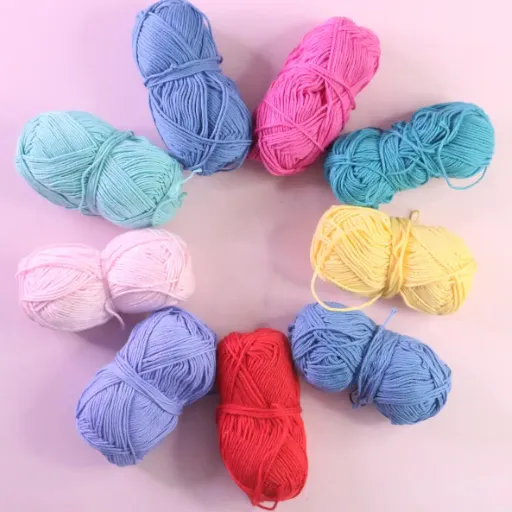
What Is Polyester Yarn?
Polyester yarn is, in essence, a synthetic fiber with petroleum-based polymers used in making it. It is made through a chemical reaction between ethylene glycol and terephthalic acid, or their reactive derivatives: polymerization or esterification and poly-condensation. The polyester fiber thus produced is then spun into yarn that is extensively used in fabrics for its strength, resilience, and utility.
One very important feature of any polyester yarn is its strength. Therefore, it will not stretch or shrink easily, thus making it a good option for any project that requires long-wearing fabric. Other characteristics of polyester worthy of mention include its lightweight nature and quick-drying properties. Polyester also does not easily absorb moisture but repels it instead, and this adds to the prevention of mold and mildew formation thereon. In essence, it fits clothing, principled upholstery, and outdoor fabrics.
Generally, polyester yarn is easy to maintain, resisting wrinkles and retaining its shape over time. Polyester yarn, however, unlike natural fibers such as cotton or wool, is not very breathable and may not be as comfortable to wear in warmer conditions. Given that, polyester is cheap and widely available, making it popular in knitting, crocheting, or weaving projects.
What is Acrylic Yarn?
Acrylic yarn is a synthetic fiber made of polymers, specifically polyacrylonitrile, derived from petroleum or natural gas. These have to be processed by a method called either wet or dry spinning, in which the acrylonitrile polymer is dissolved, spun into fiber, and subsequently stretched to impart strength and elasticity. Such synthetic makeup imparts acrylic yarn with its durability and versatility.
Perhaps its most outstanding feature is it being cheap, hence making it affordable for various craft projects such as knitting, crocheting, and weaving. The yarn is lightweight, and soft-to-touch, and comes in various colors to suit making garments, blankets, and accessories. Also acrylic yarn is machine washable, easy to maintain, and resists usual afflictions like staining, fading, and moth attacks, all of which add to its usability and appeal.
However, acrylic yarn does have some drawbacks. For example, it is less breathable compared to natural fibers like cotton or wool and that could make it uncomfortable in warmer weather. Another factor that goes against it is that it is derived from non-renewable resources, and it takes a long time to break down into the environment. But with such limitations, the acrylic yarn, since its cheaper costs and ease to work with, continues to remain a popular choice among many craft enthusiasts and is considered a reliable alternative.
Differences Between Polyester and Acrylic
Both are synthetic-fiber materials that offer a different array of properties and serve different purposes in textile and craft applications.
| Aspect | Polyester | Acrylic |
|---|---|---|
| Material Composition | Petroleum-based polymers; highly durable, resists stretching, holds shape well | Petroleum-based; made to imitate natural fibers (especially wool); softer and warmer |
| Durability and Strength | Higher durability; resists abrasion and tensile forces; ideal for heavy-duty settings | Softer but less durable; may pill and wear off faster with frequent use |
| Warmth and Comfort | Lighter and less warm; good for summer clothes and moisture-wicking athletic gear | Warmer; retains heat; excellent for sweaters and winter blankets |
| Moisture-Wicking | Excellent moisture-wicking properties; draws sweat away from body; dries quickly | Less effective; may retain moisture and become uncomfortable in humid conditions |
| Environmental Impact | Non-renewable resource; better recycling processes available (recycled PET bottles) | Non-renewable resource; recycling processes less developed |
| Cost | Budget-friendly | Generally cheaper than polyester |
| Weather Performance | Water-resistant; fast drying; ideal for outdoor and wet settings | Retains warmth but limited water resistance; takes longer to dry |
Characteristics of Polyester and Acrylic Yarn
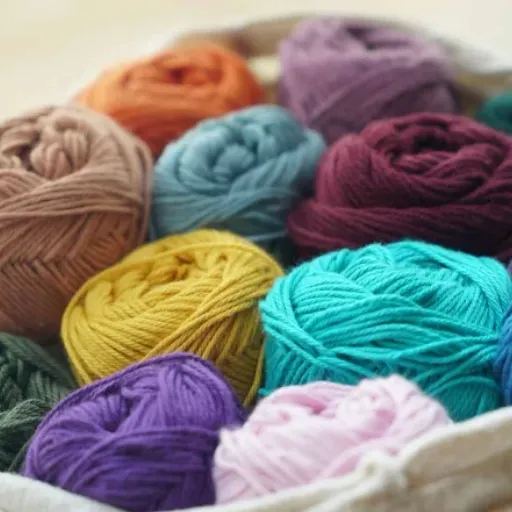
Durability and Strength
General polyester yarn is reputed for its great durability and strength, hence making it ideal for any long-lasting work. Stretching and shrinking resistant fibers give products manufactured with polyester yarn the ability to stand tall for years. Polyester performance under stress conditions is another factor to consider when selecting heavy-use items such as upholstery, outdoor wear, and sportswear.
Acrylic yarn, while durable, lacks the strength it has compared to polyester. It does handle regular wear and tear, but it will eventually pill, especially in areas of frequent rubbing. The soft acrylic fibers allow for the force of pilling,as the polyester does. Nevertheless, acrylic is a soft, warm choice for projects where durability is not the ultimate priority.
Both yarn types are cheap and versatile, but considering the differences in their durability and strength, they find different best uses. Anything made from polyester would be subject to abuse or harsh conditions, whereas acrylic products are suited for comfort-based things, like throws and sweaters. So, choosing the right one based on the requirements for durability would do the finished product justice in terms of longevity and performance.
Elasticity and Stretch
When stretched, polyester and acrylic display quite distinctive behaviors, and this leads to the use of these materials in different applications. Polyesters have excellent elasticity and retain their shape well. Due to this, fabrics made of polyester are often stretched while wearing sports, casual, or activewear clothes. Recent studies have shown that polyester fibers can stretch anywhere from 5 to 15% of their original length without any influence from permanent deformation, maintaining durability and shape retention over the time. Wrinkle resistance adds further versatility to their various textile uses.
Acrylic, on the other hand, is moderately elastic and would stretch out with stress more easily than polyester. This quality of moderate elasticity makes the fiber very fashionable for knitwear because it gives it a soft and flexible texture; there are, however, acrylic fabrics that may lose their shape faster when repeatedly stretched, especially if compared with polyester. Learn that, nowadays, the stretchability range of acrylic fibers is generally considered to be somewhere around 2-8%, which is all right for uses such as sweaters, blankets, etc., but may fail in applications that subject it to heavy stretching.
Understanding these differences is crucial in the selection of the properly fitting material. Polyester can be considered if it has to stand stretch and retain shape under stringent conditions, while acrylic is the better choice for soft, stretchable things meant for comfort. Usually, these materials are compounded as blends to allow one to use the advantages of both for the best result.
Moisture-Wicking Properties
Wicking properties refer to a fabric’s capability to pull sweat from the skin and disperse it over the fabric surface, thus facilitating quicker evaporation. Doing so keeps the wearer dry and comfortable during strenuous activity or in hot conditions. Such activewear is best if it wicks, for sweat gets accumulated otherwise and causes chafing or irritation of the skin.
Polyester is a very common fabric associated with very good moisture-wick properties. Polyester, being synthetic and hydrophobic, means it does not absorb water but instead repels moisture on the outer surface of the fabric. This keeps on wetting surface to evaporate sweat quickly while keeping the fabric weightless so as to have comfort. Along with these features, it is very durable and will not shrink; hence, it is well-suited for activewear landscapes.
In spite of their thermal qualities, acrylic materials tend to be less moisture-wicking than polyester. These fabrics are capable of absorbing more water and of holding any sweat it might get from the skin; hence, its use as active wear for intense training is strongly discouraged. However, when acrylic is blended with some other fiber like polyester, it also gains the property of moisture-wicking while still retaining the softness and comfort that it lends to the fabric. It is always profitable to take into consideration the nature of the fabric and the activity at hand when choosing any activewear for top flexibility and comfort.
Benefits of Using Polyester Yarn
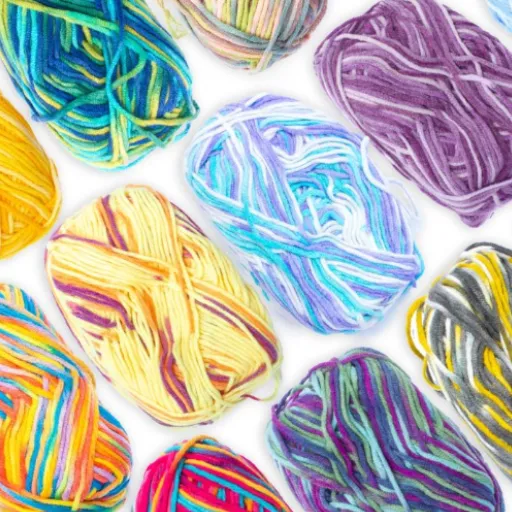
Affordability and Accessibility
Polyester yarn is generally believed to be affordable, and hence it can be afforded by manufacturers and consumers. In comparison to natural fibers such as cotton or wool, polyester is cheaper to produce because it is made from commonly available petroleum derivatives. This keeps the price down and allows the fiber to be used in an enormous variety of textile applications, from clothing to furnishings.
Another feature that makes the weave of polyester yarn accessible is its worldwide availability. Since polyester can be produced in large quantities with consistent quality, it is sold in markets the world over. This guarantees that industries, such as fashion and upholstery, will have a steady supply of the material whenever they put forth a demand for it.
More versatility adds to its value. Stocks of this fiber can be blended with other fibers, creating special fabrics exhibiting certain features, i.e., more strength or water repellent. This extra capability, coupled with affordability, makes the polyester thread one of the most practical yarns for the average consumer or for large producers.
Wrinkle Resistance and Maintenance
It is the wrinkle resistance for which polyester enjoys being so well-regarded- thereby remaining a classic consideration for wearing and household applications. Being synthetic, the fiber can keep its shape through time and resist creasing when put under pressure-wearing situations it after heavy use. This particular characteristic saves an additional wrinkle of time from ironing.
Maintenance-wise, polyester might prove to be easy-going going too. The cloth can be washed in a machine and dried rather quickly as it also shines in hard-wearing capability, even when subjected to multiple washes; differentiating its color and texture. Such properties make these fabrics a standard for use in things like clothing, upholstery, and other textile applications. Furthermore, polyester is another in great resistance to shrinkage and stretching and stays true to fit and appearance even after multiple washes.
With cold or warm water, polyester retains its wrinkle resistance and durability. Avoid drying at extreme heat; low heat or air drying is better for wear and tear over time. If at all ironing, it can be done at a low temperature. Together, these basic care measures ensure that polyester items remain usable and dependable over the long term.
Applications in Various Projects
It is due to the multifaceted nature of polyester that it finds use in many projects and industrial sectors. Apparel fabrication dominates the industrial uses of this material because it is strong, durable, and needs little maintenance. Polyester is the choice of material for sportswear, activewear, and outerwear since a polyester material that holds its shape is usually moisture-resistant, providing good stretchability, being a great option for casual to high-performance apparel.
Polyester continues with its uses in furnishing and decorating projects. Curtains, upholstery, and carpets are often produced using polyester fibers, as these fibers resist abrasion and can easily be cleaned. On the other hand, since polyester holds dyes very vibrantly, it is a perfect candidate for decorative textiles, and printed designs remain for a lifetime.
Polyester also serves key purposes in industrial uses. It’s a core material in ropes, seat belts, and tire reinforcement by virtue of its reliable strength. In addition, polyester is favored in arts and crafts and various DIY applications as a medium for colorful and durable items, including bags, tapestries, and art prints. Being highly versatile and resilient, polyester will probably remain a keen choice in both artistic and functional projects in a wide array of fields.
Drawbacks of Polyester Yarn
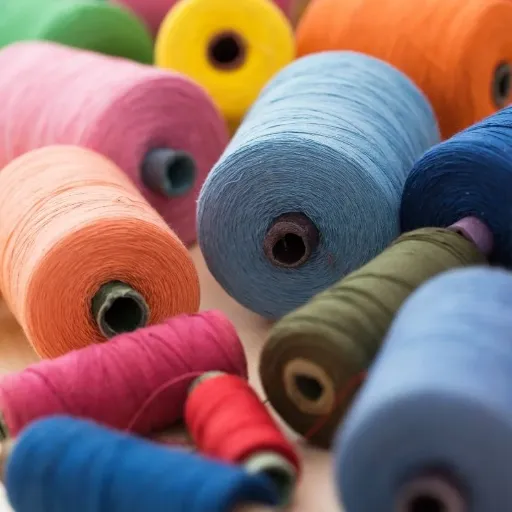
Environmental Impact
Polyester yarns suffer major environmental challenges, very much because of the synthetic nature of the fibers. Derived from petroleum non-renewable resource-whilst the formation always demands a great deal of energy and showers down GHG emissions. The predominant anxiety in the global climate change lies in the relief offered by the fossil-fuel industry in polyester-type manufacture.
Another major titanium for the environment is the insolubility of polyester yarns. It can take anything from hundreds of years to vanish into nothingness through decomposition. This leads to long-term pollution of both landfills and natural systems. During washing processes, however, an unfortunate majority of polyester garments release microplastics into water systems. In large amounts, these small particles accumulate in aquatic environments, threatening marine life and entering food chains.
In order to lessen the environmental impact of polyester, there are recycling endeavors present that aim at fabricating polyester from already existing materials. Whilst it is good with respect to waste disposal and energy conservation, recycled polyester hardly addresses all other issues-one of them being sifting away into micro-plastics. Reducing dependence upon virgin polyester and building toward alternatives that have less ecological impact are, therefore, equally critical steps in lessening the effect caused by this widely used material.
Breathability Issues
This means that a fabric has good breathability if it allows moisture vapor to go through it. This enables sweat to evaporate and thereby makes the person comfortable. Being a highly durable and lightweight fabric, polyester is comparatively less breathable than natural fibers such as cotton. It traps heat as well as moisture, and thus it is not the best choice for applications requiring long ambient comfort in warm conditions or for active wear.
This actually causes more discomfort for the wearer when used in high humidity or strenuous conditions. They accomplish this because polyester fibers are non-porous and keep moisture against the skin rather than allow air to pass through. Sometimes treatments might help or blending MOLYNELT with another fabric might improve performance, but this core lack of breathability remains an inherent characteristic of the material structure itself.
To meet losses regarding polyester’s lack of breathability, there is a need to accelerate innovations in fabric engineering-innovations that incorporate moisture-wicking treatments and specialized weaves that augment air permeability. Alternatives such as natural fibers or bio-based materials, characterized by improved breathability, can also become a sustainable alternative for consumer needs as these alternatives would reduce the demand for classical options in synthetics.
Feel Against the Skin
The feel of a fabric against the skin is basically one of the deciding factors on whether a given fabric is worthwhile for a certain application. Polyester is said to be smooth and lightweight, and hence, it is commonly used for sportswear and other kinds of active wear. Polyester, however, can occasionally feel coarser or less natural than common choices like cotton and bamboo, which are known for their softness and very skin-friendly properties.
Natural fibers are widely preferred because they are soft and breathable, and hence comfortable for long wear, especially in warmer weather. Hence, crystallization of more such bio-based and blended materials capitalizes on the good texture of natural fibers while retaining all good attributes like durability and moisture-wicking of synthetic fibers. This greatly increases the versatility and adaptability of today’s textiles vis-à-vis skin sensitivities.
Since one has sensitive skin, hypoallergenic fabrics such as organic cotton or silk are usually recommended. If the fabric underwent processing with hard chemicals, it might irritate. Thus, one should choose an allergen-free material processed with the health of the skin in consideration. In the end, which fabric suits will depend on the preference of choice and the end purpose of the garment.
Common Uses of Polyester and Acrylic Yarn
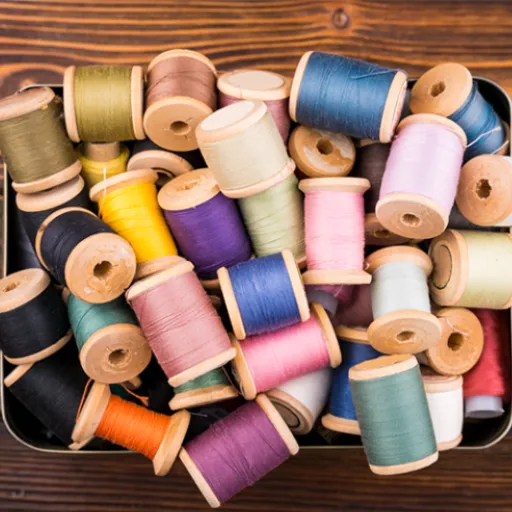
Everyday Apparel and Sportswear
With their versatility, durability, and affordability, polyester and acrylic yarns are most often used in everyday apparel and sportswear production. Polyester yarn stands out as an exceptional moisture-wicking fiber, so it is much sought after in activewear for this feature. This fiber wicks moisture away from the skin, keeping athletes dry even through the most rigorous exercises. However, acrylic yarn is cherished for its soft hand feel and wool-like properties, making it excellent for sweaters, scarves, and light layering garments.
A market report issued recently has suggested that polyester fiber accounts for roughly 52% of the global fiber production in 2022, asserting the dominance of polyester fiber in the textile industry. Apart from that, the resistance to wrinkles, to shrinking, and to stretching ensures its use in everyday garments such as t-shirts, leggings, and jackets. Given its fantastic receptiveness to dyes, acrylic yarn tends to be used extensively in manufacturing colorful knitwear and accessories.
For sportswear, polyester is used in high-performance apparel such as compression wear, sports bras, and running shorts because it’s strong. In contrast, acrylic finds its way into some outdoor sports apparel as insulation for going to cold places. Blend fabrics of polyester and acrylic knit wear solutions represent a tradeoff between durability, comfort, and style, catering to the wants and needs of the consumer. These characteristics have made both yarns vital in contemporary textile design.
Home Furnishings and Decor
Being so practical, durable, and versatile, polyester and acrylic fibers serve a wide range of purposes in home furnishings and decor. Because it absolutely resists stains and fading, and more importantly, wrinkling, polyurethane may be preferred for upholstering curtains and rugs to allow for very extended use especially in high usage areas. It is also inexpensive and commonly available in the market, making it favorable for homeowners who want style and function together.
While soft acrylics are desirable because of their insulation properties, they are great for blankets, throws, and decorative pillows. These almost mimic the soft and sumptuous feel of natural fiber, like wool, so they give warmth and pleasantness to interior areas while being resilient and cheap to maintain. Alongside being fast drying, acrylics are also resistant to sunlight, hence making it a dependable and trustworthy material for furnishings both inside and outdoors.
Blended fabrics made by combining polyester and acrylic normally balance strength, comfort, and aesthetic appeal. These blends find use in upholstered furniture and decorative pieces, thereby leaving customers with more options to beautify their homes. Together, polyester and acrylic make sure that home furnishings and decor have practical and stylish solutions on offer for today’s living needs.
Outdoor Gear and Industrial Uses
Polyester and acrylic materials earn huge amounts of love under outdoor equipment and industrial applications due to their durability and adaptability. Polyester and acrylic materials find their way into the outdoor world through tents, backpacks, and outerwear of different varieties. They resist abrasion as well as water, and hold their shape even in very harsh climatic conditions. These fabrics’ nature to be lightweight makes it an ideal choice for any consumer who is concerned about having to carry a heavy load.
In industrial applications, polyester and acrylic are majorly important in manufacturing processes and products. Polyester is commonly used in conveyor belts, harnesses for safety, and filtering systems, all because of its high breaking strength and resistance to elongation. Acrylic, by contrast, is valued for its transparency and weather resistance, and is therefore used in signage, skylights, and protective barriers.
Additionally, these materials higher standing against UV rays and entail low maintenance, thereby ensuring long-term performance. These two materials were chosen for a broad range of industries, having established their versatility and reliability to satisfy both functional and aesthetic demands in modern applications. Thus, arising from these characteristics, polyester and acrylic become prime ingredients in making any product that is durable, efficient, and suited for any environment.
Frequently Asked Questions (FAQ)
Q: Is polyester yarn good for everyday wears?
A: Yes, polyester yarn is good for everyday wears for it is durable and does not wrinkle or shrink easily. Very few materials get used that much and washed that often for garments and textile, and these materials seem very apt to fulfill those needs.
Q: What are the differences between polyester yarn and cotton yarn?
A: Whether polyester or cotton yarns are considered, consider two things: polyester yarns are manufactured using petroleum by-products while cotton yarns are somewhat natural cotton fiber. Usually, polyester is tougher and easier to maintain than cotton, but cotton is cotton-soft and breathable.
Q: Can we use polyester yarn for crochet?
A: Certainly, polyester yarn can be used for innumerable crochet projects. Due to its heavy tensile strength and resistance to pilling, it is a good selection in making amigurumi and wearables.
Q: Is polyester yarn better than acrylic yarn?
A: Each fiber has its own plus and minus points. Polyester yarn is usually more durable and resistant to abrasion, whereas acrylic yarn tends to be softer and easier to knit for the beginner. The choice depends on the actual requirements of the project.
Q: How does polyester yarn stand against the natural fibers, such as wool?
A: Man-made synthetic fibers, such as polyester yarn provide alternatives to natural fibers such as wool, with characteristics such as being easy to care for and being durable. However, it may lack in breathability and softness that some natural fibers might provide.
Q: What kind of projects can be worked upon with polyester yarn?
A: Polyester yarn can be used in all types of projects, including garments, home textiles, and accessories. It is a durable choice for items that require repeated washing and exposure to wear.
Q: Is polyester yarn suitable for beginners?
A: Yes, polyester yarn is good for beginners because it is easy to work with and machine washable. It is usually more forgiving than other types of yarn. Furthermore, the stretchiness of the yarn makes handling it in knitting or crocheting easier.
Q: How do I care for items of polyester yarn?
A: Items of polyester yarn are generally the kind that, when washed, can be machine-washed and dried, thus being an advantage for anyone searching for easy care options. Always consider the care label steps given for particular instructions.
Q: What properties make polyester yarn an appropriate choice?
A: Polyester yarn is considered to possess a very high tensile strength, possesses the property to resist its materials being wrinkled, resist shrinkage, and good durability; hence it is a good and efficient yarn type for many different craft work needs.
References
- What is Polyester Yarn Good For? – This article discusses the versatility and affordability of polyester yarn, making it a great option for beginners and garment-making.
- Polyester Yarn vs. Cotton Yarn: Which is Best for Your Project – This source highlights the elasticity, tensile strength, and color retention of polyester yarn, comparing it to cotton yarn.
- The Pros & Cons Of Polyester | Fibre Manufacturing – This article outlines the advantages and disadvantages of polyester, including its static retention, heat retention, and eco-friendliness









